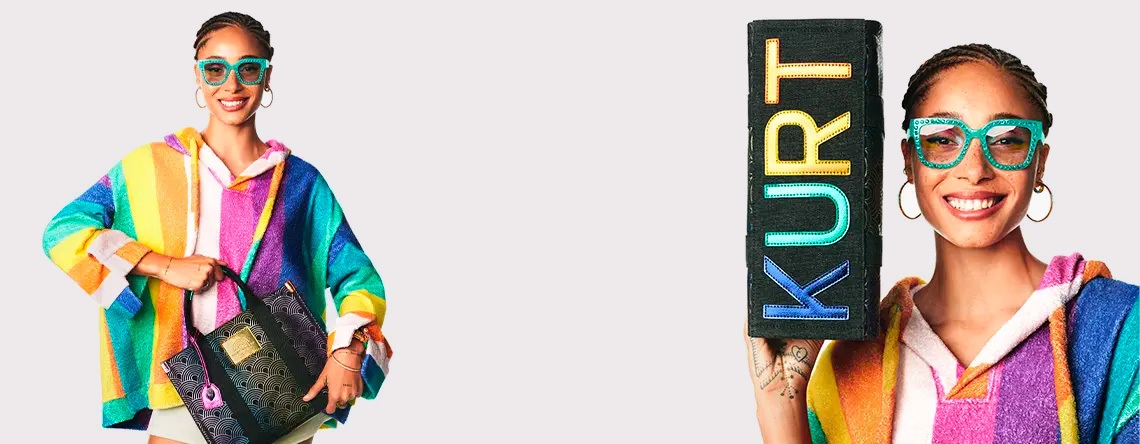In the U.K., British footwear and accessories brand Kurt Geiger has over 70 standalone stores and is carried in 100 retail departments, including at Nordstrom, Bloomingdale’s and Harrods. Now, after securing $190 million of additional funding in June, the 60-year-old company hopes to replicate its retail-channel success in the U.S., starting with 4-6 new stores.
Best known for its Shoreditch and rainbow-colored Kensington bags, Kurt Geiger’s biggest market is North America. It counts Jennifer Lopez and Rebel Wilson as fans. In the U.K., bags account for 50% of its sales. In the U.S., that number is over 80%. Its U.S. e-commerce sales are three times its online business in the U.K.
On June 20, the retailer secured new funding from Wells Fargo Capital Finance U.K. and U.K.-based private credit fund Blazehill Capital, to the sum of $191 million (£150 million). Kurt Geiger now plans to open four stores in the U.S., starting in February 2024, in Florida, Texas, California and New York.
Since 2019, the brand has doubled its annual revenue in the U.S. Its 2023 sales in the market are projected to rise above $200 million, all through its department store partners and owned e-commerce. Kurt Geiger is stocked in Nordstrom, Dillard’s and Bloomingdales and its bags are priced at $200-$300. In December 2015, London-based private equity firm Cinven acquired Kurt Geiger from its previous owner, New York-based private equity firm Sycamore Partners, for £245 million.
“Our wholesale partners tell us that it would be wonderful if we had stores,” said Neil Clifford, CEO of Kurt Geiger. “Our success has been mainly around the design of our product and its uniqueness and price point, but not brand awareness. … As a result, wholesalers are urging us to bring out our own stores, and we plan to put a lot of capital into our U.S. retail presence in 2024.”
The brand previously attempted owned retail in the U.S. in 2013, opening four stores. They all closed, owed to low brand awareness and the financial impact of running the stores. The company also pulled out of retail partners. Since 2021, it has been considering bringing back its branded stores, following its wholesale return in 2018.
“Americans love malls, and they’re very good at them,” said Clifford. Malls were chosen due to their foot traffic and customer convenience. The brand has multiple shops in U.K. shopping centers, like the Westfield mall in Stratford, London.
In addition, Kurt Geiger is currently opening stores in South America, in Mexico, with three total stores set to open in the region before the end of the year.
Central to the brand’s U.S. expansion strategy has been building up its business strategy and distribution, aided by Steven Sousa, who joined the brand as international director in 2017 from Michael Kors.
“We already had all the theory, the ambition and the energy to take our brand successfully to North America, but we didn’t have the instruction manual or the experience in the market,” said Clifford, regarding the value Sousa brings to the company.
Clifford said that it’s likely the brand will open 20-30 stores in North America over the next five years, with store locations corresponding to areas where it’s seen demand in e-commerce. “Our brand communication is enhanced by having those stores,” he said.
As part of its marketing strategy, Kurt Geiger is also tackling U.S.-specific product collaborations, as its prior collaborations have been popular in North America. In June, it launched a collaboration with fashion designer-turned-interior designer Matthew Williamson, with the included bags, shoes and accessories selling out in three weeks.
Since 2021, Kurt Geiger has also introduced categories including jewelry, clothing and home goods. It is expanding into men’s later this year, led by Samuel D’Avoine, formerly the head of men’s design at Jimmy Choo.
The brand’s full-funnel marketing approach for the U.S. includes paid advertising and social media.
Starting in October, the brand will also roll out marketing for its retail business program, Business by Design Academy, through its brand and charity ambassadors. The brand will use the Academy, which is launching its first cohort in spring 2024 to recruit in-house talent. The tuition program will allow future participants to take live or online courses provided by the brand.
“We will run a whole portfolio of education for young people who didn’t make it through school or haven’t got the relationships and the contacts to [even] start at the bottom of the ladder in the creative industries,” said Clifford. The Academy will host 60 young people in its first phase, in honor of the brand’s 60th anniversary. Participants will be chosen based on interviews with brand executives, and all 60 participants will be based in the U.K.
“Retail is the place where you go [to work] before you know what you want to do, and you learn essential skills there,” Clifford said.
He added, “My real goal is to have everyone that joins the company come through the Academy in the future.”




